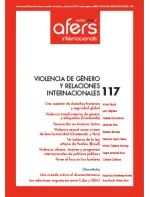Feminicide in Latin America: legal vacuum or deficit in the rule of law?

The escalating number of violent female homicides committed by men over the last two decades has compelled many Latin American countries to classify (typify) the crime of gender-based homicide as “feminicide” (or “femicide”). Their objective was to raise awareness and thereby decrease the number of feminicides committed per year. However, although the rate of feminicide fell in many countries, it rose again in subsequent years. In this study, a dataset was built on the rate of feminicide between 2000 and 2014, and an analysis is made of influencing factors. The criminalisation (typification) of feminicide is not found to be significant to predict the rate of feminicide. Instead, low levels of the rule of law and a lack of female representation in decision-making bodies such as national parliaments are found to be the most significant factors in explaining the variation in feminicide trends.
Key words: Latin America, feminicide, impunity,legislation, rule of law, typification
DOI: doi.org/10.24241/rcai.2017.117.3.51
>> The full text articles of this issue are available only in Spanish language